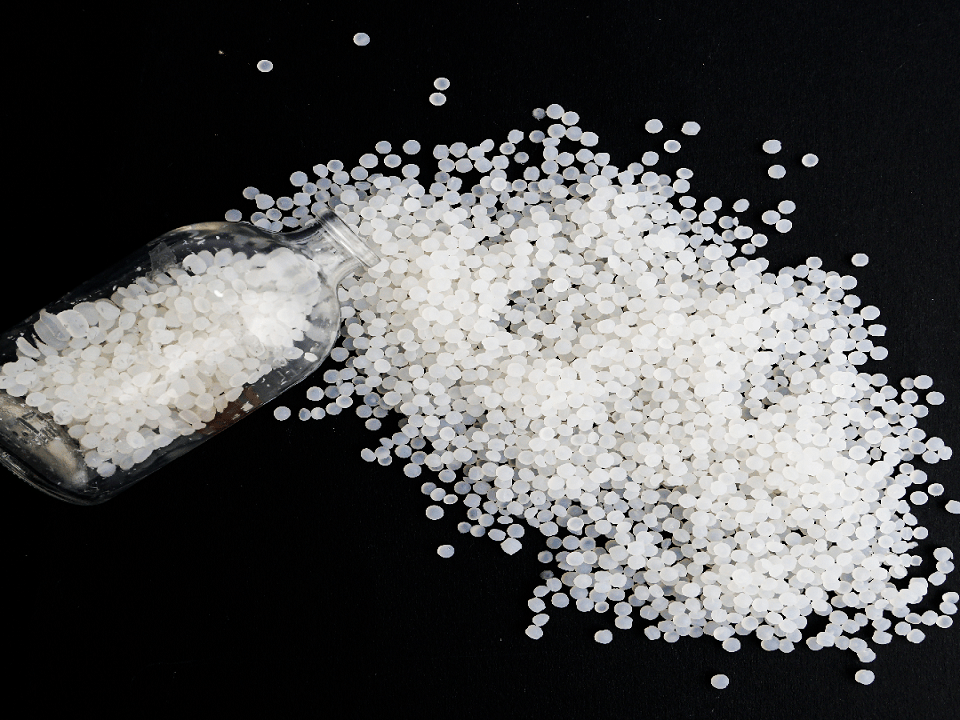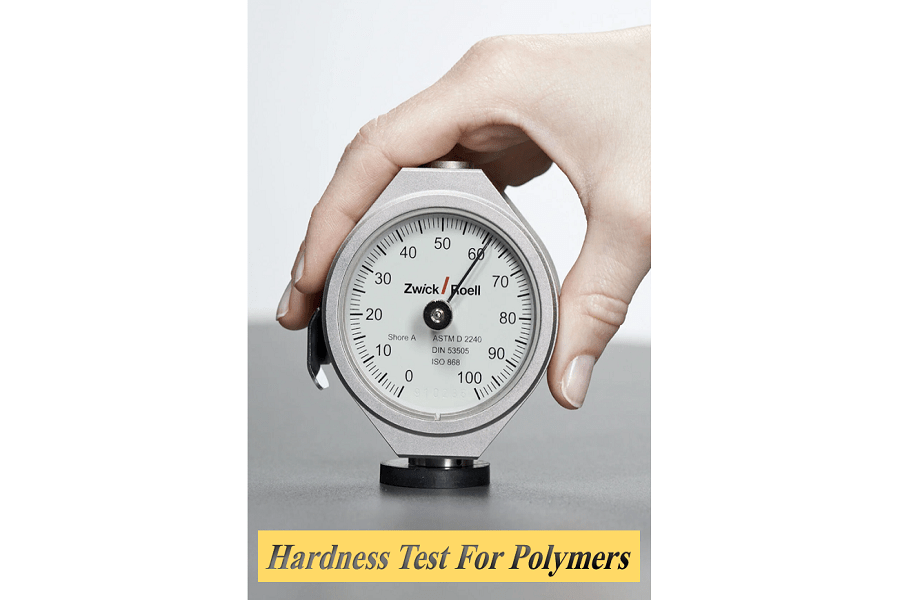An inquiry into the efficacy of polyethylene interlayer adhesive in enhancing adhesion strength
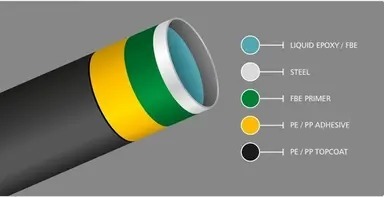
An inquiry into the efficacy of polyethylene interlayer adhesive in enhancing adhesion strength
Introduction
One of the major issues for companies active in the section of petroleum, gas, water, and sewer transmission line, as steel pipes manufacturers, is the corrosion issue of described pipes. Nowadays, various techniques are utilized to improve the corrosion resistance of described pipes, including coating with bitumen and 2, and 3-layer coatings. Three – Layer coatings that are made up of three – layers; an epoxy, an adhesive, and heavy polyethylene layers are considered the most effective method of coating steel pipes., The first layer is an epoxy resin that can be heat-cured, and its easily applied to the surface of the steel pipe due to its high adherence.
This coating improves the corrosion resistance of the steel pipe. but the major issue of this coating is that becomes exposed to damage caused by transportation, mechanical impact (due to impacts), and weather and moisture variations. To solve this problem, a heavy polyethylene layer is applied on top of these coatings.
The polyethylene layer except increasing strength also increases the resistance of the coating against mechanical impacts and weather variation. However, the main issue of this coating is that it doesn’t have adhesion to the steel pipe and epoxy coating due to differences in polarity. Therefore, an intermediate layer, as an adhesive, is utilized between the inner (epoxy) and outer (HDPE) layers. The adhesive layer that is grafted with maleic anhydride groups is a compound of polyethylene.
The described coating must have proper adhesion to the pipe to achieve the best corrosion protection for the steel pipes. According to the reports presented, this 3-layer coating separates from the surface of the steel pipe in a very short period and loses its efficiency. [1]
Various factors contribute to the separation of the steel pipe from the coating. one of the proposed theories that has been studied in the last investigations, the reasons for separation of the three-layer polyethylene coating from the surface is related to the stresses imposed on the pipe, including soil stresses, stresses caused by expansion and contraction due to temperature, and line pressure variations, and internal stresses that remain from the installation of the coating stage [2].
These stresses are due to the lack of proper interfacial properties in the 3-layer coating, which does not function as a mechanical resistant layer between the epoxy coating and the outer HDPE layer, as a result, these stresses are transferred to the joint surface of the pipe and an epoxy layer, and cause separation.
Therefore, proper adhesion between the coating layers is as important as the adhesion of the epoxy coating with the steel pipe. This article examines the reasons for different layers’ separation of the coating as one of the important elements in the pipe’s separation from the coating.
Tool and Method
Three-layer corrosion-resistant coatings of oil and gas pipes are made up of a primer layer of an epoxy, a polyethylene interlay adhesive, and a polyethylene coating layer, as displayed in Figure 1 [3].
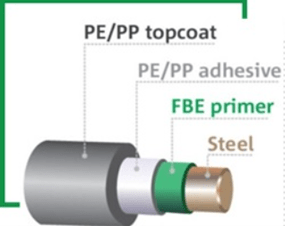 Figure 1: Ingredients of 3-layer corrosion-resistant coatings [3]
Figure 1: Ingredients of 3-layer corrosion-resistant coatings [3]
The inter layer adhesive is based on polyethylene or polypropylene, which must be compatible with a polymer coating (non-polar) on one side and with an epoxy base layer (polar) on the other side. Therefore, polyolefin compatibilizers have the most important role in formulating interlayer adhesives [3].
The produced polyethylene adhesive is a combination of different ingredients based on polyethylene. Considering the vital role of maleic anhydride-based compatibilizers in the function of this adhesive, all other components of the adhesive formulation, except for the polyethylene compatibilizer, are kept constant and the effects of variations in this polymer on the function of the peel test are examined. In the production of the polyethylene compatibilizer, polyethylene reacts with maleic anhydride (MAH) in a twin-screw extruder (Figure 2), and the output of the extruder, which is polyethylene with maleic anhydride, is utilized as a compatibilizer (PE-g-MA) in the interlayer adhesive composition. The chemical composition of the above compatibilizer is displayed in Figure 3 [4].
 Figure 2: method of the reactive extruder using organic acid in the manufacture of an adhesive compound product [4]
Figure 2: method of the reactive extruder using organic acid in the manufacture of an adhesive compound product [4]
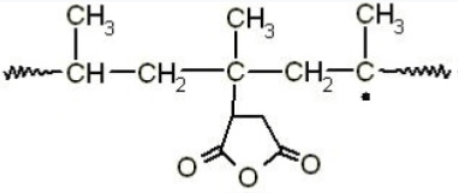 Figure 3: Chemical structure of the polymer compound containing maleic anhydride groups [4]
Figure 3: Chemical structure of the polymer compound containing maleic anhydride groups [4]
The function of the polyethylene compatibilizer in the interlayer adhesive is crucial because this compound, because of the chemical reaction between the maleic anhydride group and epoxy with its maleic anhydride (MAH)head, links to the primer layer (an epoxy) and links to the outer black layer (polyethylene) by its polyethylene head. As displayed in Figure 4.

Figure 4: chemical reaction between the compatibilizer and an epoxy Layer [4].
This product due to its linking properties improves the adhesion strength qualities of two layers as demonstrated in Figure 5, by selecting the appropriate compatibilizer and its optimal concentration in the production formulation, the adhesion strength qualities of the two layers can be improved. As observed that the optimal percentage of the suitable grade of compatibilizer will cause 20% improvement, at least, in adhesion strength compared to other percentages.
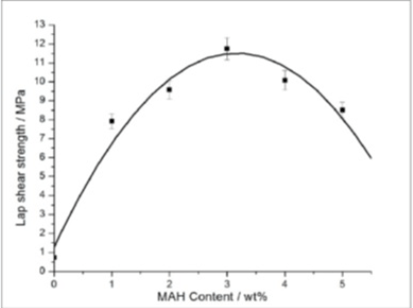 Figure 5: Chemical structure of the polymer compound containing maleic anhydride groups [5]
Figure 5: Chemical structure of the polymer compound containing maleic anhydride groups [5]
Conclusion
In order to evaluate Aria Adhesive 4107, it has been compared with two samples of Italian and Korean adhesives according to the Iranian National Gas Standard for three-layer coatings IGS-C-TP-010, as displayed in the Table 1.
Table 1 – Comparison of properties of interlayer adhesives for three-layer coatings according to the Iranian National Gas Standard.
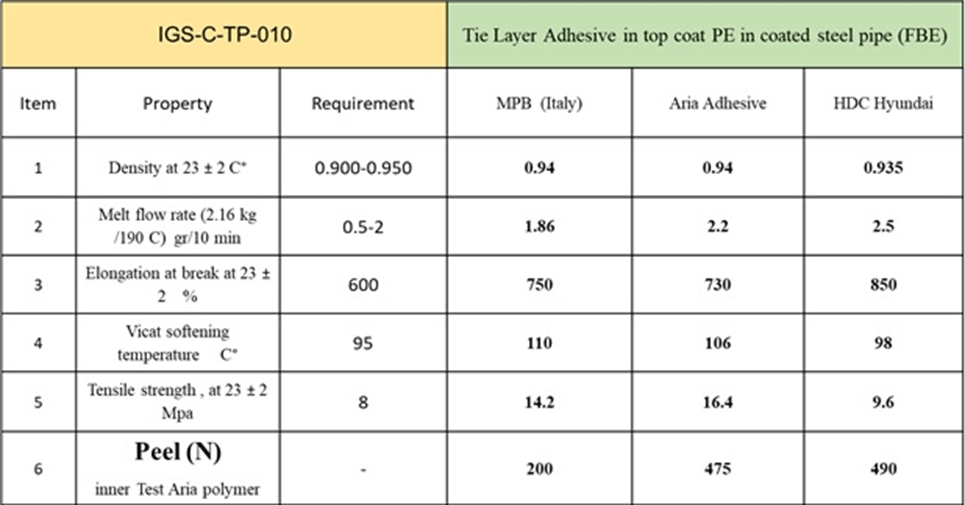
To evaluate the specified results, all grades are within the approved range of the Iranian National Gas Standard IGS-C-TP-010 and the adhesion strength test (Peel Strength) was conducted according to ASTM D1876 standard under comparative conditions, and the Iranian adhesive grade showed significant adhesion.
Author: Farnaz Ramezanian
References
[1] Varughese K, (2006). Improving Adhesion Properties of Three Layer Polyethylene Systems for Underground Pipeline Protection.
Available
[2] Surface Coatings on Steel Pipes Used in Oil and Gas Industries – A Review, January 2016, American Chemical Science Journal 13(1):1-23.
[3] M. S. F. Samsudin, M. Dell’Olio, K. H. Leong, Z. Ahamid, and R. J. Varley, “Adhesives performance of 3-layer PE pipe coatings: Effects of MAH loading, PE particles size, coating interval time and service temperature,” Prog. Org. Coatings, vol. 99, pp. 157–165, 2016.
[4] S.W. Guan, K. Y. Chen, N. Uppal, S. McLennan, A novel anti-corrosion pipeline coating solution, 2014.
[5] Mahendrakar, S. (2010). Maleic Anhydrid Grafted Polypropylene Coatings on Steel: Adhesion and Wear.

